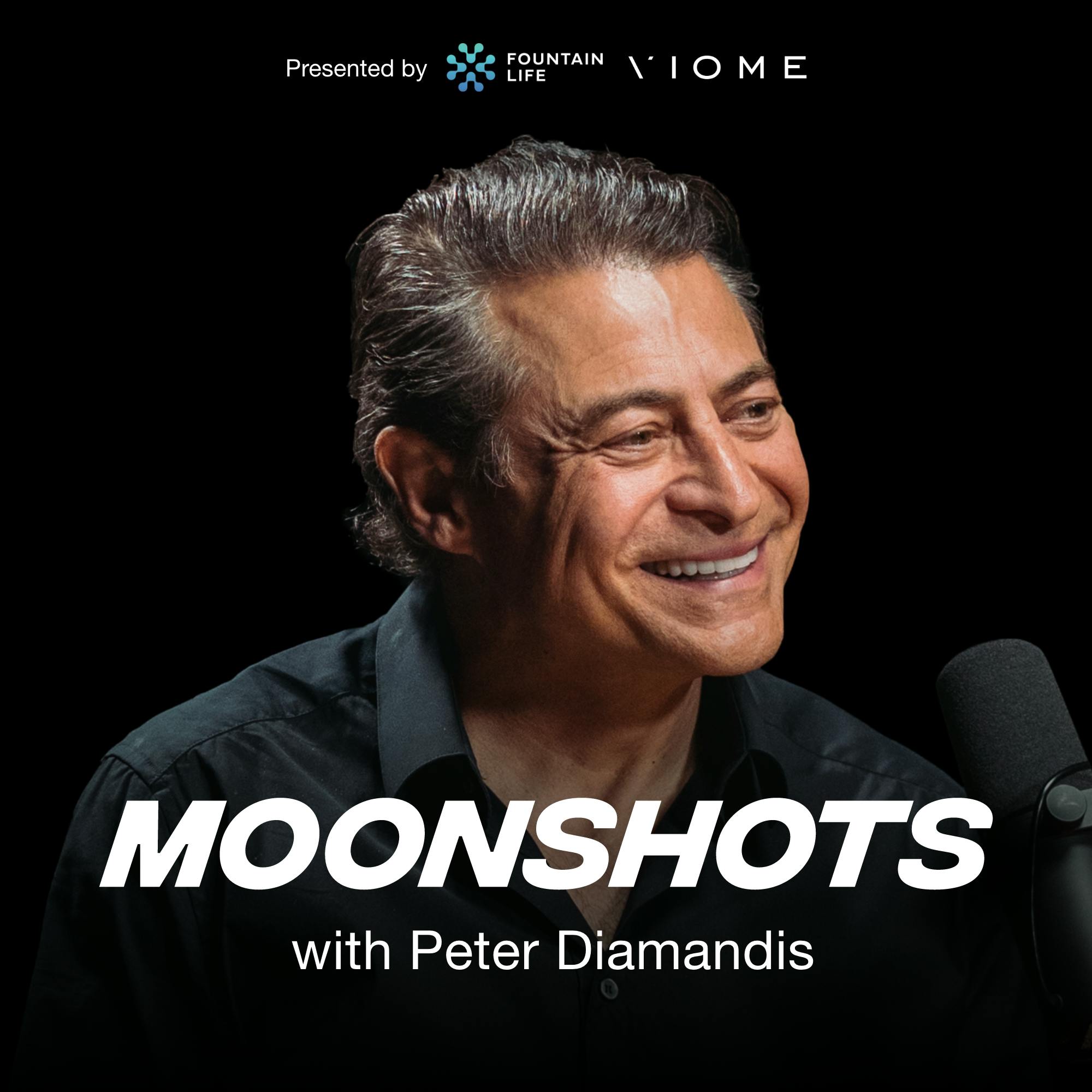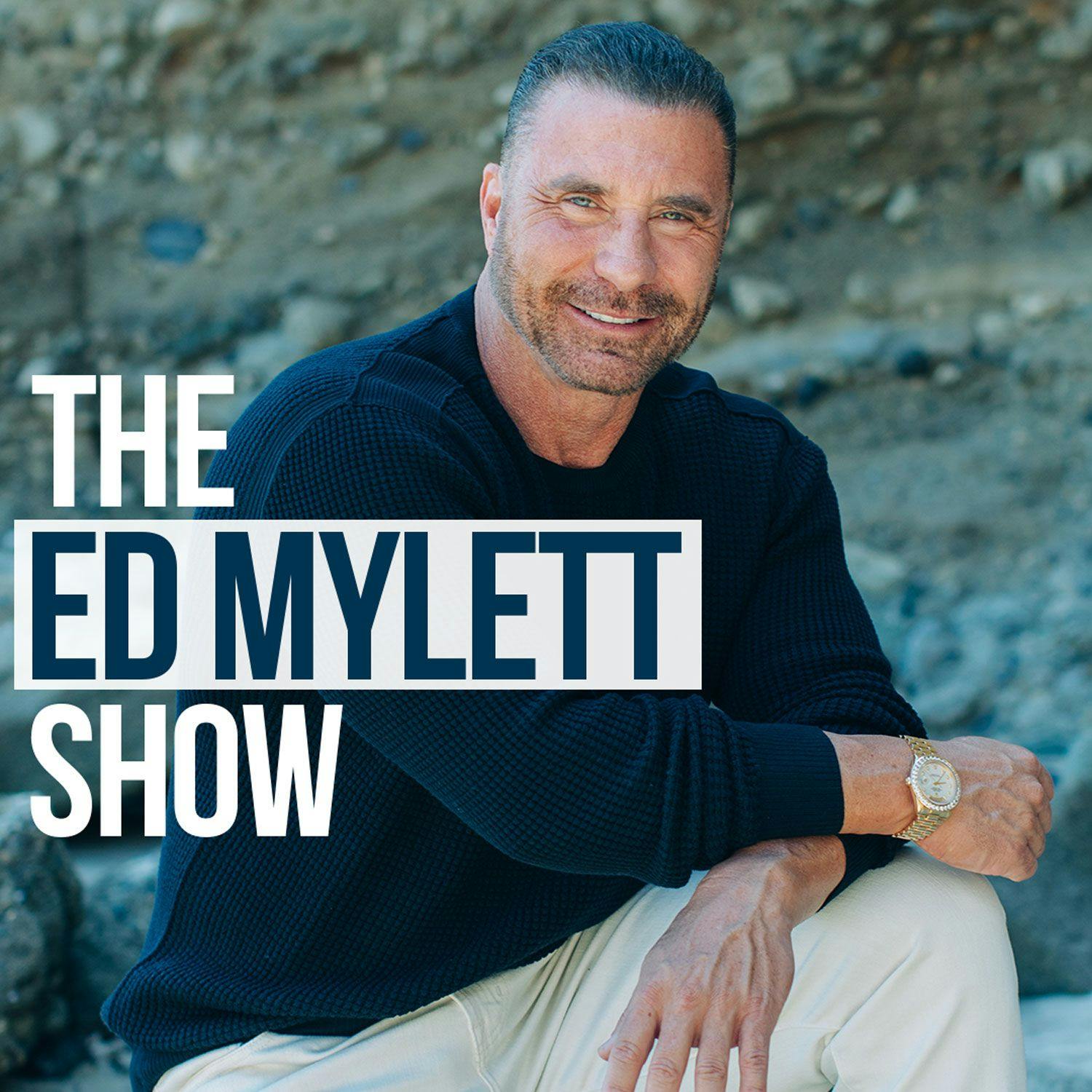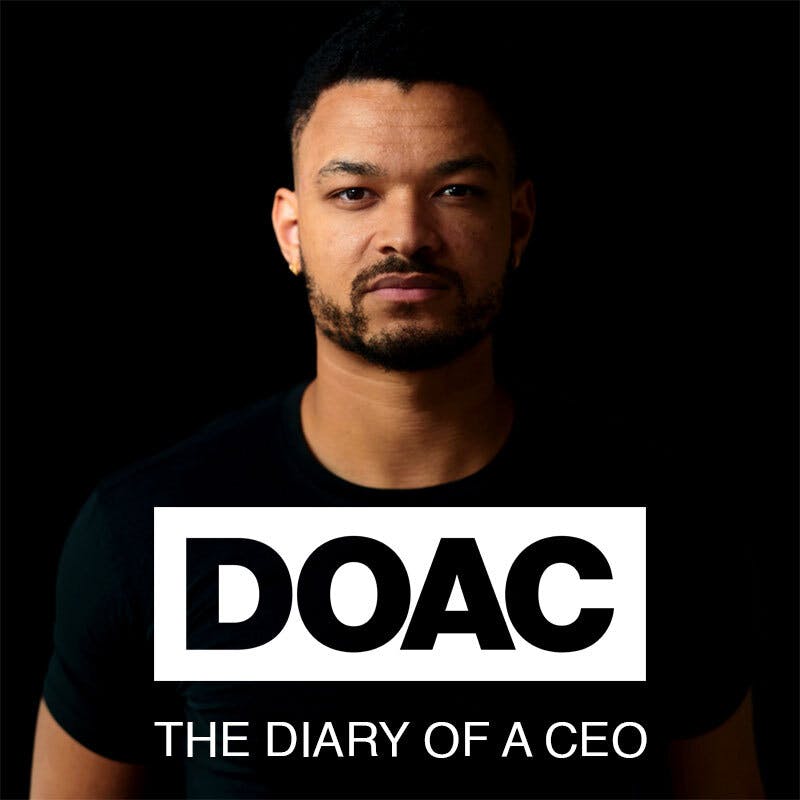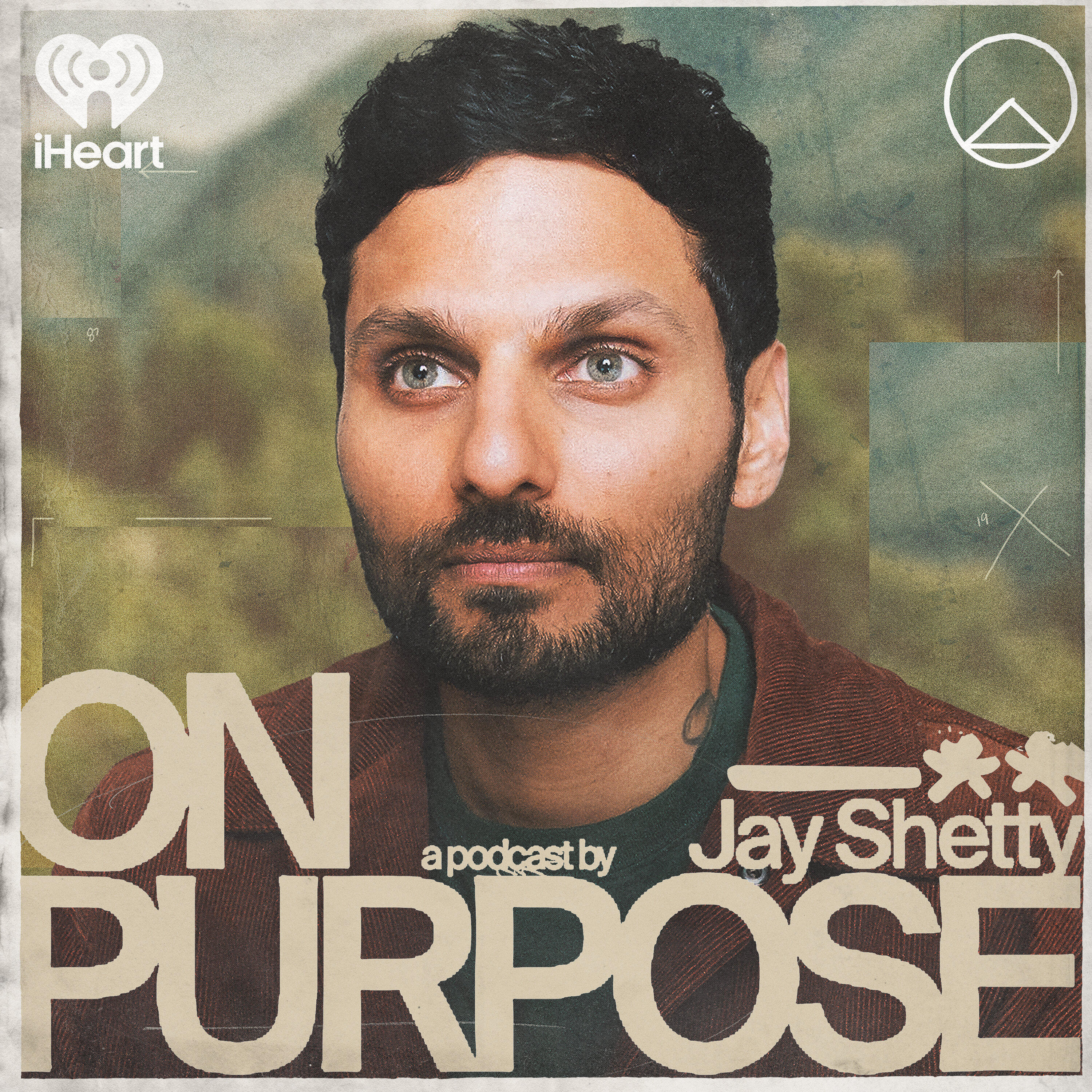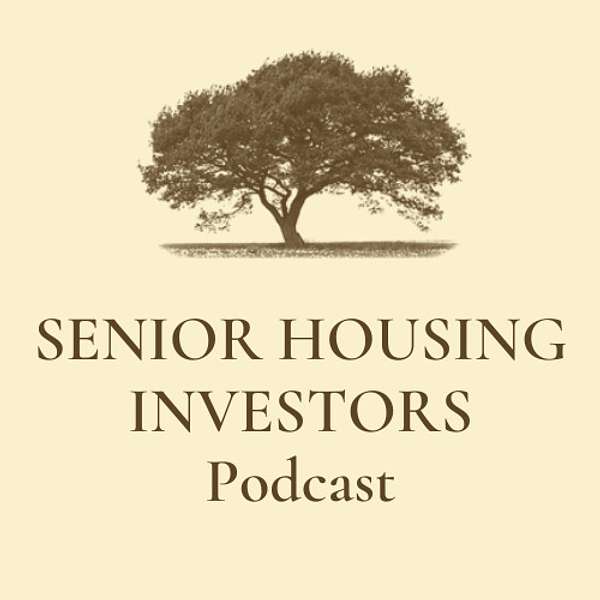
Senior Housing Investors
Bringing you the innovators, investors, and leaders across the full spectrum of assisted living and senior housing, all of whom provide for the betterment of our senior population.
Senior Housing Investors
Empathy in Architecture: Revolutionizing Senior Living with Siobhan Favardin
Discover the transformative power of architecture in senior living with the visionary Siobhan Favardin, 2023 Design Champion by Environments for Aging , Partner and Global Practice Director - Senior Living at HKS.
As we delve into her remarkable journey from a foundation in arts and sciences to revolutionizing senior living spaces, Siobhan imparts the essence of empathy-driven design. Through her lens, learn how hands-on experiences, like simulating the daily challenges of elderly residents, are key to crafting environments that resonate deeply with their needs. This episode offers an enlightening perspective on the profound impact thoughtful design can have on the quality of life for our senior community, revealing how space can be both functional and filled with heart.
Venturing into the latest trends in senior living, we uncover the evolution towards vibrant, intergenerational communities with amenities and tailored cultural designs. Siobhan shares her experiences with projects from Mexico to high-rise complexes that are redefining the way we think about senior housing. The discussion of the 'Design with Dignity' playbook and the introduction of geriatric simulator suits exemplifies HKS's commitment to evidence-based, empathetic design. For anyone interested in where the future of senior living is headed or simply inspired by the fusion of care and creativity, Siobhan's insights offer a window into a world where architecture meets compassion, improving lives one space at a time.
It's one thing to be drawing a design, but to live it and understand and to feed in somebody else's shoes, that was the idea. Say, somebody is straight out of school, they're drawing a unit plan or they're drawing a dining venue or floor plan, they can go to a community and live a day in the life of a senior for the next 24 hours. When they arrive to the community they're assigned by staff a fake ailment. So for me, for example, I went to Indiana and I was assigned a wheelchair and I was told that I was getting my hip replaced. So for the next 24 hours I'm navigating a community in a wheelchair. So it's a tool for our staff or designers to really put themselves in the shoes of who we're designing for.
Speaker 2:Welcome to the Senior Housing Investors Podcast. If you are an owner operator, investor, developer or buyer of senior housing, you've come to the right place. This way to stay connected with us is to sign up for our weekly newsletter at HavenSeniorInvestmentscom. This podcast doesn't exist without you, our community. Thank you for listening and reach out to us anytime. Welcome back, everyone. Today, kelsey Herrmann's, my co-host, has the pleasure of interviewing an amazing architect that was recently named a 2023 design champion by Environments for Aging. This award that she was awarded celebrates leaders within the senior living design sector who are bringing change and advocacy to the industry Kelsey.
Speaker 3:Thank you, john. Hey everyone, I am so excited to be here today with Siobhan Favardin, who is the Global Practice Director within the Senior Living Department of HKS. Hks is a global firm of architects, designers, planners and advisors who create places noted for their beauty and performance. Thank you so much for being here with me today, siobhan.
Speaker 1:Kelsey. Thanks, it's a great pleasure to be here.
Speaker 3:Thank you for inviting me, yeah of course I'm excited about our conversation. So first just tell our listeners a little bit about yourself.
Speaker 1:Sure, well, I live in Texas. I've been here since last millennial 1999. Considered myself an honorary Texan, even though I wasn't born here, originally from England, my mom is from Northern Ireland and my dad is from Iran, so we always joke around that nobody in our family is from the same country, but we all consider ourselves Texan.
Speaker 3:That's great. Yeah, I feel you. So I've been in Colorado now over half my life and I feel like, okay, maybe I can be an honorary Colorado, maybe not, I don't know, some people think different. That's really neat. So have you been over to Ireland area?
Speaker 1:Yes, I have. I still in fact have some family over there. My aunt and uncle and their children some of their children are there. They also have family in England. So I do go over there. Sometimes I don't get there as much as I'd like to, but hopefully in the future I'll be able to travel there more.
Speaker 3:Yeah, that would be wonderful. I hear it's beautiful. Someday I hope to get over there. Let's jump in and talk about kind of your path. How did you choose this path of?
Speaker 1:architecture. Well, I've always been interested in the arts and in the sciences. As a child, I never really had enough Legos. There just seemed to be this desire to have endless supply of Legos and it just couldn't get my hands on enough. It was a great way, I think, for me to harness the artistic side. Also, I loved physics in middle school and high school. It was a great way for me to harness the two and blend them together. My dad he, came from an engineering background. He's an electrical engineer, a software engineer. My mom, it was a teacher. She guided me towards this path. She exposed me to architecture. We traveled a lot as a family and just pointing out things to be looking at, always being curious. She was always asking me what did I think about such and such a place or such and such an architect? It got me curious early on. A new right away. Stepping into college, that's where I wanted to go. I headed to the University of Florida they had a great program for undergrad and Gainesville, and the rest is history.
Speaker 3:That's so wonderful. What a blessing to find your passion early on I feel like that doesn't happen as often as it should. Where you grew up with this natural instinct of creativity and building, having the support of your parents pushed you in that direction. That's really neat that you were able to harness that. As a young kiddo being an architecture, I know that you've probably done a couple of different types. Did you always want to be in senior living or did something else pull you in that direction?
Speaker 1:It's interesting because I never really thought of it being something that I could specialize in. I always thought I would be a generalist. I cut my teeth in the office, so doing a lot of speculative office design, a lot of core and shell, and then waiting to see who would be the tenant to move in. It was a really great way to learn how to put a building together very quickly. Schedules were fast, you knew how to work with consultants and a developer. The lifecycle of the project was pretty short compared to what we would say like a lifecycle of a design period for hospitality or senior living. But after about five years or so I was looking for something with a little more purpose, a little more program. The story did not show how successful background at the University of Florida was really about spatial organization, less about the facade design and how spaces come together. I really wanted to get back to those roots.
Speaker 1:Senior Living landed in my lap with an opportunity. One of my friends had connected me to David Dillard, who was heading up a practice that was focused just on Senior Living. To my surprise, when I had a chat with him learned that it was blended hospitality with residential. It just seemed like there was so much program that it would never be a dull day. As far as what you could organize a space to be, it just seemed limitless. In that regard, it was a very exciting chapter to step into it. It was daunting too, because I didn't know what I didn't know. But it was a great team and the team is also still. Many of us are still working together. We've been there probably over 15 years together working on just Senior Living. We've learning from each other and the space itself is evolving too. I'm talking about the industry itself is evolving In that regard. It's always dynamic and changing.
Speaker 3:I have to imagine that being with a group of people from such different backgrounds really makes sense. Like you said, Senior Living is not just one thing or another. It's a blend of different things. I'm curious about everything that HKS does. Can you give us just a quick breakdown of the different types of industries that you guys are working in and maybe how you collaborate together?
Speaker 1:Sure, yeah Well, we are a design firm, we're not just architecture. I mean we have many practices, so to speak. Senior Living sits within this group called Place Within Place. We have commercial mix use, we have Rezi, we have hospitality and mission critical All that important data that sits on your phone that goes to the Cloud. That's what mission critical is. Then there's Overlap within the Place organization that overlaps into healthcare venues.
Speaker 1:We have sports, performing arts. We also have education, k through 12, higher ed. Then we have an innovation platform that's really looking at research, real estate advisory. It helps clients navigate what should they be doing with their real estate. We have cities and communities. That's looking at urban planning, looking at it from an urban planning standpoint. Then we have sustainability through the eyes of ESG. Then the other part of this is what we call line is really just pushing the envelope. Our CEO, dan Noble, will say is where the puck is going, not where it is, but think limitlessly, really pushing the envelope as far as how we're using materials, getting the maximum usage out of it. Looking at AI when is AI going and where is it going to take us?
Speaker 3:That's really interesting. I can imagine AI in that industry is limitless there. I know I'm veering off a little bit from senior living, but I have to ask because I was excited when I heard about all of this. You guys have that sporting stadium arm. Tell us about a couple of the exciting things that have recently unfolded in that area.
Speaker 1:Sure, maybe not so recent, but now recent in the news is our AT&T Stadium, which is, I think, the ribbon cutting was back in 2009. Now it's going to be hosting one of the games for the FIFA World Cup. That's really exciting to see that happening at being a venue for what we call soccer or football worldwide. Sofi Stadium in LA is a pretty cool story there because it was one of the first projects that was digitally stamped and sealed. This is something that HKS has patented. It's an emerging technology that allows, instead of printing documents and signing and sealing them, it's submitted to the city, submitted to the contractors through a BIM model, because it's so complex. It's at the point where paper doesn't make sense. It's really cool to see something like that. The Sofi Stadium, then the technology that was developed through that is now being shared with other parts of our practices and a potential method for project delivery.
Speaker 3:That's absolutely incredible, just groundbreaking, and, like you said that, you can use that in your other areas of the practice too, so that's really cool. Speaking about design and architecture as it relates to senior living and quality of life, I think that's so key when you're looking at developing senior living. What connections do you see between different types of design and quality of life?
Speaker 1:Yeah, I think it's more connection. Now. I think operators, developers are seeing the value in ESG. They're seeing the value in connecting the outdoors and indoors and blurring that line, so to speak. They're seeing that it actually has an impact on mental and behavioral health. So I think what we're going to see and we already are seeing this is a lot more blurring of the lines between landscape and interiors. So what that means is more open windows in key areas, more spatial connections than we in less formulaic. So let's see more curated spaces for seniors. I think we saw this during the pandemic.
Speaker 1:It was pretty strenuous for staff to take care of our loved ones and making sure that staff retention is there. How do we elevate the staff experience? And making sure that their break room, for example, is not just a back room that has no windows, but it's really an experiential place. It's an oasis, because some staff may not have the best place to come home to. So if you can create an environment, that is great experience for staff. They're excited, they want to be there and they can feel at peace, because a lot of times this can be very stressful environment when you're taking care of people that are distressed.
Speaker 3:Yeah, absolutely, and I think you know more and more lately it's just become so apparent that staff has to be taken care of. You know, it's such a tough job sometimes to take care of people in senior living, and so if you can pour into them and support them in different ways, that might seem small but are actually, you know, a huge deal to them. Like you said, a break room that has windows or that's relaxing so that's great, that you guys can see that quality of life is not just for the residents, it's for the staff and everybody involved. So tell us more about the mixed use environments in senior housing. I know that that's a big project for you. So what are you guys doing in that area of architecture?
Speaker 1:We're working a lot with cities and communities.
Speaker 1:That's looking at design through the urban lands and more integrated beyond the walls of the actual physical senior living community. So what I mean is creating environments that are vibrant, welcoming for not just a senior living resident, but it could be built some curiosity for folks that may be walking down the street and saying you know what? I would like to have a coffee at this coffee bar down the street, but it just happens to be operated by the senior living community. So really just blurring those lines and making it more like a true, proper town and city, I think we're going to see a lot more intergenerational senior living communities. So the more we can involve the adult child, the grandchildren coming into these communities is great because it's less of an obligation, it's more of oh, it's dynamic, it's fun. Let's do something together with our grandparents or mom and dad. We're doing a community right now, high rise, that's got a bowling lounge. So that's not just necessarily for the seniors but it's also great for the grandkids and it's cool to see people using that in different generations coming together.
Speaker 3:That's wonderful. I mean, intergenerational living is just a huge interest of mine and Haven in general. But I'm curious about this idea the mixed use environments in senior housing in other parts of the world. It seems as though the United States views aging differently than other areas in the world, and I'd asked you about this on a phone call because I believe that you guys are global, You're not just in the United States. So how are you seeing senior housing emerge in areas where it's more normalized for adult children to take care of their parents at home?
Speaker 1:I mean it's definitely something that we're looking at on a case by case basis. There's no, it's not homogenous by any means. We are context driven. So every project that we look at, we look at what we call nature of place study, and that means we're understanding what are the family dynamics, what are the other components, where the hospital systems, for example, are they nearby? Do we create local clinics on site? And then understanding what are the sizes of these dwelling units need to be, because here's an example In Mexico we're looking at two projects and it's more of a family culture.
Speaker 1:If family is coming to visit on a weekend and that's part of something that's typical in that culture then you want to create spaces where family can gather together and not smaller rooms. You want to create bigger dining venues where a group of maybe 10 or 15 can come together and celebrate on a weekend, not just for Mother's Day or Birthday celebrations. This is very common to do this every week. So that's just one example and so it's really just a case by case basis is understanding how different cultures think and how they like to grow.
Speaker 3:So you guys have a pretty big research arm which is very key in this industry. So it sounds like a lot of the stuff you're doing, for example, in Mexico. A lot of research goes into that. When we spoke last, you told me about the Sleepover project in that research arm. I have to say that's one of the most unique things I've heard of in senior living and I absolutely love it. So tell our listeners what that Sleepover project is. Sure.
Speaker 1:Yeah, this Sleepover project is something that we have been doing as a practice for over 10 years now, and it was really a way. It's one thing to be drawing a design, but to live it and understand and truly put your feet in somebody else's shoes that was the idea is OK. So say, somebody is straight out of school, they're drawing a unit plan or they're drawing a dining venue floor plan. They may not know what they're drawing right away, but they can go to a community, and so we ask this of all of our staff to go and experience this. They can go to a community and live a day in the life of a senior for the next 24 hours, and so when they arrive to the community, they're assigned by staff a fake ailment. So for me, for example, I went to Indiana and I arrived there and I was assigned a wheelchair and I was told that I was getting my hip replaced. So for the next 24 hours I'm navigating a community in a wheelchair.
Speaker 1:I consider myself fairly strong, but my upper body was struggling to make the transitions between floors, from VCT to carpet and tile and so forth.
Speaker 1:So those were some of the things that we observe is what we would see as maybe not a big issue, because for those that are more mobile it becomes an issue, and so it really builds empathy and making sure that things details matter. Things that designers like to think about is maybe planning things to be centered, such as a lavatory, a sink and a space, but what we've learned from people with Alzheimer's or dementia is that they need cues to prompt themselves to do something. So one thing that we like to do is offset the vanity so that it can provide a staging ground for the toothbrush, the toothpaste, and then here's your water, so it really reminds a patient or a resident to OK, here's how you would remember to brush your teeth, and having just a simple one more foot or six more inches is critical to really prompt that person. So it's a tool for our staff or designers to really put themselves in the shoes of who we're designing for and really just polishing how the design can be better for the resident.
Speaker 3:Yeah, that attention to detail that you guys have found is incredible, and I imagine that as you continue to have staff do the sleepover project, you learn little tidbits each time and it just continues improvement, so that's really neat.
Speaker 1:We are actually amping this up a little bit. Next week we will have a geriatric simulator suit for anybody who's watched the Limitless series by with Chris Hemsworth, so that will step it up a little bit to really emulate what it is it like to have like arthritis, for example. So it'll simulate that.
Speaker 3:That's really cool. Have you guys ever thought about making a docu-series about that, or just to share those findings with other people?
Speaker 1:We're talking about that and in fact, we are going to launch a Design with Dignity playbook that will be coming out next year. What that means is it's going to have elements of our findings from the sleepover project and we're going to back it up with research, so we'll have evidence-based design studies that will support why we do certain things, design things a certain way, and then it'll be backed up by research so it will be documented through a Design Dignity playbook.
Speaker 3:That's great. So that playbook will be available to the public. Then you said next year. That's the goal right now. Ok, wonderful, I look forward to seeing that. So, ok, my last question for you as we're wrapping up here Based on your experience as an architect, all of the projects you've worked on, all of the people you've worked with, where do you feel that senior living is heading? What will the future look like?
Speaker 1:I just came back from Australia. It was for fun and I went to this community with my family and it wasn't intended to stumble upon senior living. We just happened to see it on Google Earth and felt, wow, this is a really cool, cool area and it was basically a food hall and it had a wellness hub and a daycare and a casino all under one roof and we had a blast that afternoon. And then we realized there was also housing on site and then we realized, after Googling it, that it was senior housing. So I think it was highly successful. It's obviously intergenerational. I think what we're going to see in the future is more of a mixed use, setting of everything all under the one roof more vibrant communities, less autonomous communities. Now, that's not for everybody necessarily, but I think there's going to be more of a blending between uses of wellness and health care and I don't necessarily think we'll be clinical per se, but it'll be more behind the scenes and the support for the senior living communities.
Speaker 3:Well, I am very much looking forward to what you guys are going to do in the future. It sounds like you're headed in the right direction and that's really exciting. So thank you for everything that you guys do for our senior community and thank you for joining me today, siobhan. It was really fun getting to know you and what you guys are doing over there at HKS. So if anybody that is listening, wants to get ahold of you, wants to learn more about your projects or what you're doing, what is the best way for them to find you?
Speaker 1:Sure, yeah, you can reach us at wwwhksinccom and then if you type in senior living, you'll find me there. I know my name is a little bit challenging to spell but it's S-I-O-B-H-A and we should get it there. But happy to talk with anybody interested in learning more.
Speaker 3:All right, wonderful Well, thank you so much for joining me today.
Speaker 1:Thank you, Kelsey Pleasure.




